-
 Bitcoin
Bitcoin $91,986.3241
-4.66% -
 Ethereum
Ethereum $2,510.6411
-10.85% -
 Tether USDt
Tether USDt $0.9998
-0.04% -
 XRP
XRP $2.3291
-9.84% -
 BNB
BNB $616.1864
-6.09% -
 Solana
Solana $141.9785
-15.14% -
 USDC
USDC $0.9998
-0.02% -
 Dogecoin
Dogecoin $0.2109
-13.27% -
 Cardano
Cardano $0.6867
-11.23% -
 TRON
TRON $0.2401
-2.25% -
 Chainlink
Chainlink $15.2541
-13.65% -
 Stellar
Stellar $0.3010
-9.64% -
 Avalanche
Avalanche $21.7707
-12.89% -
 Sui
Sui $2.8843
-16.15% -
 Litecoin
Litecoin $116.7665
-10.20% -
 Toncoin
Toncoin $3.4113
-9.84% -
 Hedera
Hedera $0.1973
-6.68% -
 UNUS SED LEO
UNUS SED LEO $8.7972
-9.88% -
 Shiba Inu
Shiba Inu $0.0...01375
-11.18% -
 MANTRA
MANTRA $8.1974
-2.43% -
 Polkadot
Polkadot $4.3888
-11.28% -
 Hyperliquid
Hyperliquid $19.9907
-14.17% -
 Ethena USDe
Ethena USDe $1.0003
0.00% -
 Bitcoin Cash
Bitcoin Cash $292.8485
-10.74% -
 Bitget Token
Bitget Token $4.6339
-7.70% -
 Dai
Dai $0.9999
0.01% -
 Uniswap
Uniswap $7.9587
-12.19% -
 Monero
Monero $228.7844
-3.36% -
 NEAR Protocol
NEAR Protocol $3.0441
-11.05% -
 Bittensor
Bittensor $399.0732
-7.25%
What sector does Stacks(STX) currency belong to?
Stacks (STX) has secured its position within the blockchain landscape by bridging the gap between Bitcoin and decentralized applications and is particularly prominent in the sector of smart contracts on Bitcoin and DeFi and NFT platforms.
Dec 09, 2024 at 07:51 am

Understanding the Sector of Stacks (STX) Currency in the Blockchain Landscape
Stacks (STX) is a unique cryptocurrency that bridges the gap between Bitcoin and decentralized applications (dApps). Its innovative design and functionalities have solidified its place in a specific sector within the blockchain ecosystem, which can be categorized into two primary areas:
Smart Contracts on Bitcoin
The primary sector where STX excels is enabling smart contracts on the Bitcoin blockchain. Unlike Ethereum, which has its own dedicated blockchain for smart contracts, STX leverages Clarity, a specialized programming language, to execute smart contracts natively on the Bitcoin blockchain. This integration opens up a vast array of possibilities for developers, empowering them to build dApps that interact with Bitcoin's vast network and ecosystem.
DeFi and NFT Platforms
Another significant sector where STX plays a crucial role is in decentralized finance (DeFi) and non-fungible token (NFT) platforms. STX enables the creation of dApps that offer financial services such as lending, borrowing, and tokenized assets. These dApps leverage the security and immutability of the Bitcoin blockchain, while adding programmable functionality and interoperability with the broader DeFi ecosystem. Furthermore, STX facilitates the creation and trading of NFTs on the Bitcoin blockchain, providing a secure and reliable platform for digital collectibles and unique digital assets.
Detailed Analysis of Stacks' Sector Classification
1. Smart Contract Platform:
Stacks' primary value proposition lies in its ability to execute smart contracts on the Bitcoin blockchain. Smart contracts are self-executing agreements that automatically execute when specific conditions are met. They enable a wide range of applications, including tokenized assets, decentralized exchanges, and automated markets.
2. DeFi and NFT Platform:
Stacks' DeFi capabilities are still in their early stages but hold immense potential. By leveraging Clarity, developers can create DeFi dApps that access Bitcoin's liquidity and security. These dApps can offer a wide range of financial services, including lending, borrowing, and trading of tokenized assets.
3. Bitcoin Integration:
Stacks' native integration with Bitcoin is a key advantage. By connecting to Bitcoin's blockchain, Stacks dApps can interact with the vast network of users and ecosystem of services. This integration allows developers to tap into Bitcoin's liquidity, security, and network effects.
4. Clarity Programming Language:
Stacks' Clarity programming language is a key innovation that enables smart contract development on Bitcoin. Clarity is a proof-of-work language that ensures contract execution is secure and predictable. It also simplifies contract development, making it accessible to a broader range of developers.
Steps to Participate in Stacks Ecosystem
1. Acquire STX Tokens:
To participate in the Stacks ecosystem, you need to acquire STX tokens. You can purchase STX from exchanges such as Coinbase, Binance, and OKEx.
2. Set up a Stacks Wallet:
Once you have purchased STX tokens, you need to set up a Stacks wallet to store your tokens and interact with the Stacks ecosystem. There are several wallets available, including Hiro Wallet, Stacks Wallet, and Xverse.
3. Choose a dApp:
Once you have set up a wallet, you can start using Stacks dApps. There are a growing number of dApps available in the Stacks ecosystem, including DeFi applications, NFT marketplaces, and gaming platforms.
4. Connect to a Stacks dApp:
To use a Stacks dApp, you need to connect your wallet to the dApp. The dApp will provide instructions on how to connect your wallet.
5. Start using the dApp:
Once your wallet is connected, you can start using the dApp. You can use your STX tokens to interact with the dApp, such as lending or borrowing tokens, trading NFTs, or playing games.
Considerations for Participating in Stacks Ecosystem
1. Smart Contract Security:
As with any blockchain-based platform, the security of smart contracts is a key consideration. Stacks contracts are executed on a separate blockchain, Stacks 2.0, which is different from Bitcoin's main blockchain. While separate blockchains reduce the risk of unintended consequences of complex smart contracts, it's important to stay informed about security updates and best practices.
2. Scalability Limitations:
Stacks' smart contract capabilities, while an innovation on the Bitcoin blockchain, may face scalability limitations compared to other smart contract platforms like Ethereum. It's essential to monitor the platform's development roadmap for scalability solutions, such as off-chain transactions or interoperability with alternative layer-2 networks.
3. Interoperability with Bitcoin:
Stacks' integration with Bitcoin offers advantages, but it's important to note that not all Bitcoin services and features may be seamlessly accessible through Stacks. Keep informed about the level of interoperability and any limitations to ensure a smooth experience when interacting with Bitcoin-based assets.
4. Developer Adoption:
The success of Stacks depends on developer adoption and the growth of the ecosystem. Monitor the platform's development activity, community engagement, and strategic partnerships to gauge the level of developer interest and commitment to the project. This can inform your expectations for the platform's long-term growth and adoption.
5. Maintain Security Practices:
As with all cryptocurrency investments and participation in blockchain ecosystems, it's crucial to prioritize security. Implement robust cybersecurity measures such as two-factor authentication, secure password management, and staying vigilant against potential scams or phishing attempts.
Disclaimer:info@kdj.com
The information provided is not trading advice. kdj.com does not assume any responsibility for any investments made based on the information provided in this article. Cryptocurrencies are highly volatile and it is highly recommended that you invest with caution after thorough research!
If you believe that the content used on this website infringes your copyright, please contact us immediately (info@kdj.com) and we will delete it promptly.
- 30M+ Unique Crypto Tokens and Growing!
- 2025-02-25 09:10:28
- FloppyPepe (FPPE): The AI Token Set to Outperform Bitcoin (BTC) in 2025
- 2025-02-25 09:10:28
- Ethereum’s Pectra Upgrade Goes Live on the Holesky Testnet
- 2025-02-25 09:10:28
- Riot Platforms (RIOT) Produced Fewer Bitcoin (BTC) in 2024 as the Cost to Mine Rose Sharply
- 2025-02-25 09:10:28
- Pepe Coin and PlutoChain ($PLUTO): Two Projects That Could Shape the Future of Blockchain Technology
- 2025-02-25 09:10:28
- Can Nation-States Fight Bitcoin With Their Own PoW Network?
- 2025-02-25 09:10:28
Related knowledge
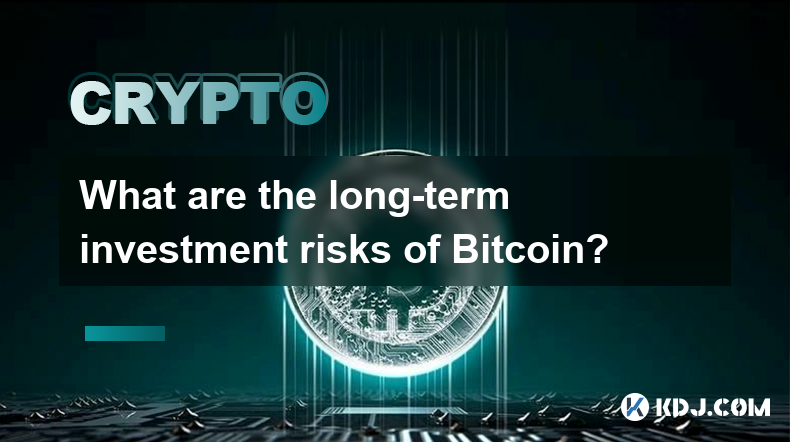
What are the long-term investment risks of Bitcoin?
Feb 22,2025 at 05:30pm
Key PointsVolatility and price fluctuationsRegulatory uncertaintySecurity risksCompetition from altcoinsMarket manipulation and scamsTransaction feesEnvironmental concernsLong-Term Investment Risks of BitcoinVolatility and Price FluctuationsBitcoin's high volatility is a double-edged sword. While it has the potential to generate substantial returns, it ...
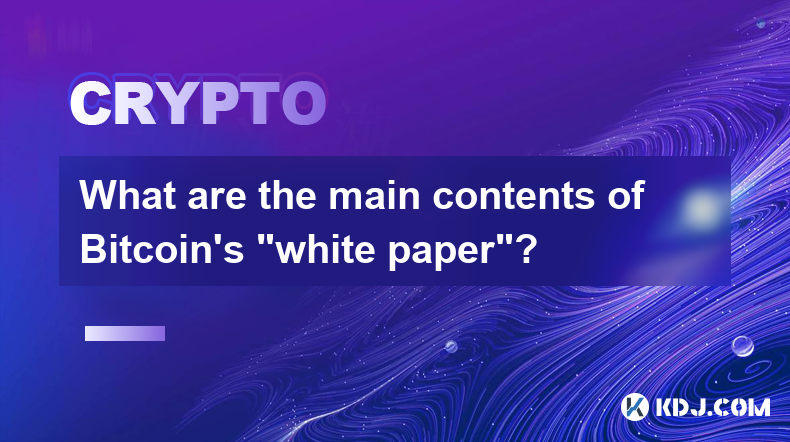
What are the main contents of Bitcoin's "white paper"?
Feb 21,2025 at 04:36am
Key Points:Understanding Bitcoin's Genesis: The White Paper's IntroductionA Decentralized Digital Currency: Bitcoin's Core ConceptBlockchain Technology: The Foundation of Bitcoin's Immutable LedgerProof-of-Work: Securing Bitcoin's NetworkThe Design of Bitcoin's Currency: Issuance, Scarcity, and DivisibilityBitcoin's Potential Applications and Future Pro...

How does Bitcoin's distributed ledger ensure consistency?
Feb 22,2025 at 10:06pm
Key Points:Bitcoin employs a distributed ledger, also known as a blockchain, to maintain a tamper-proof and consistent record of transactions.The blockchain is a decentralized network of computers that collectively validate and store transaction data.Bitcoin's distributed ledger ensures consistency through consensus mechanisms and cryptographic algorith...
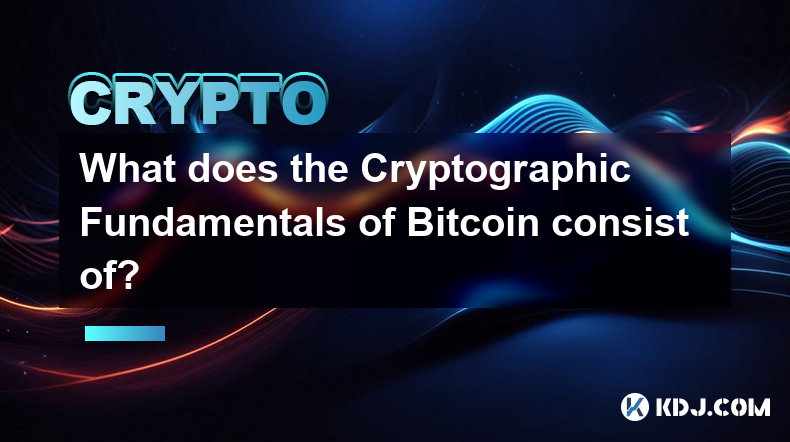
What does the Cryptographic Fundamentals of Bitcoin consist of?
Feb 21,2025 at 12:06pm
Key PointsUnderstanding the cryptographic algorithms used in BitcoinFamiliarization with the Bitcoin blockchain and its underlying mechanicsExamination of the security measures that protect Bitcoin from attackAnalysis of the decentralized nature of Bitcoin and its implicationsDiscussion of the scalability and transaction fee issues associated with Bitco...
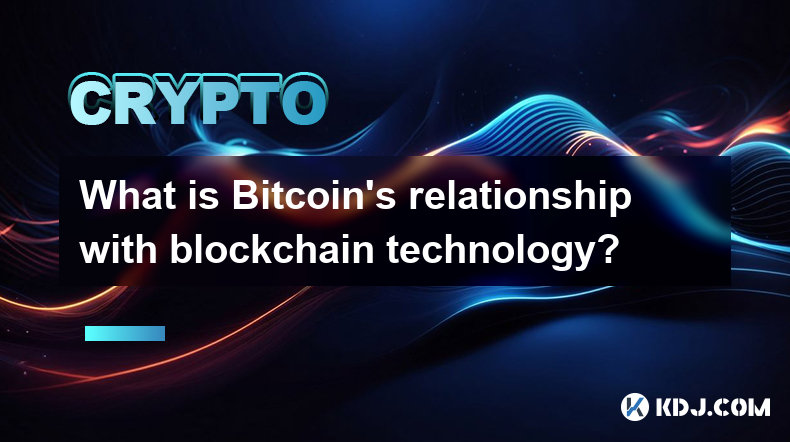
What is Bitcoin's relationship with blockchain technology?
Feb 22,2025 at 07:00pm
Bitcoin's Intertwined Relationship with Blockchain TechnologyKey Points:Definition of blockchain technology and its decentralized natureBitcoin's utilization of blockchain for secure and immutable transactionsThe role of blockchain in verifying and confirming transactionsEvolution of blockchain technology beyond Bitcoin's cryptocurrency applicationsUnde...
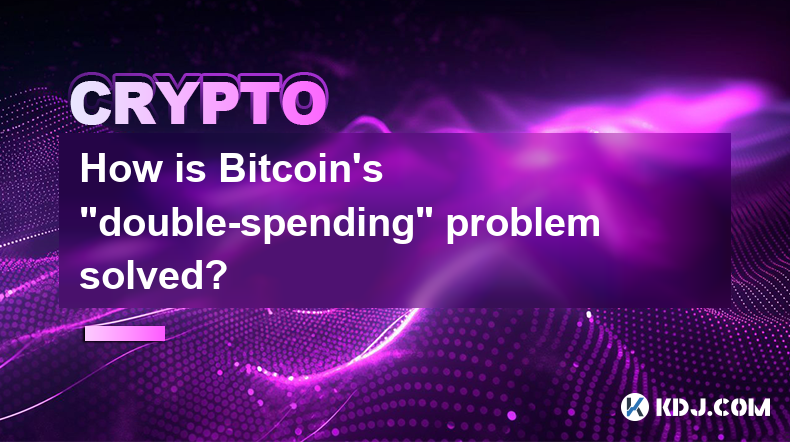
How is Bitcoin's "double-spending" problem solved?
Feb 23,2025 at 02:54am
Key Points:The double-spending problem refers to the potential for a digital currency transaction to be reversed, allowing the same funds to be spent multiple times.Bitcoin solves this problem through the use of a decentralized blockchain, a public ledger that records all transactions permanently and securely.The immutability and transparency of the blo...

What are the long-term investment risks of Bitcoin?
Feb 22,2025 at 05:30pm
Key PointsVolatility and price fluctuationsRegulatory uncertaintySecurity risksCompetition from altcoinsMarket manipulation and scamsTransaction feesEnvironmental concernsLong-Term Investment Risks of BitcoinVolatility and Price FluctuationsBitcoin's high volatility is a double-edged sword. While it has the potential to generate substantial returns, it ...

What are the main contents of Bitcoin's "white paper"?
Feb 21,2025 at 04:36am
Key Points:Understanding Bitcoin's Genesis: The White Paper's IntroductionA Decentralized Digital Currency: Bitcoin's Core ConceptBlockchain Technology: The Foundation of Bitcoin's Immutable LedgerProof-of-Work: Securing Bitcoin's NetworkThe Design of Bitcoin's Currency: Issuance, Scarcity, and DivisibilityBitcoin's Potential Applications and Future Pro...

How does Bitcoin's distributed ledger ensure consistency?
Feb 22,2025 at 10:06pm
Key Points:Bitcoin employs a distributed ledger, also known as a blockchain, to maintain a tamper-proof and consistent record of transactions.The blockchain is a decentralized network of computers that collectively validate and store transaction data.Bitcoin's distributed ledger ensures consistency through consensus mechanisms and cryptographic algorith...

What does the Cryptographic Fundamentals of Bitcoin consist of?
Feb 21,2025 at 12:06pm
Key PointsUnderstanding the cryptographic algorithms used in BitcoinFamiliarization with the Bitcoin blockchain and its underlying mechanicsExamination of the security measures that protect Bitcoin from attackAnalysis of the decentralized nature of Bitcoin and its implicationsDiscussion of the scalability and transaction fee issues associated with Bitco...

What is Bitcoin's relationship with blockchain technology?
Feb 22,2025 at 07:00pm
Bitcoin's Intertwined Relationship with Blockchain TechnologyKey Points:Definition of blockchain technology and its decentralized natureBitcoin's utilization of blockchain for secure and immutable transactionsThe role of blockchain in verifying and confirming transactionsEvolution of blockchain technology beyond Bitcoin's cryptocurrency applicationsUnde...

How is Bitcoin's "double-spending" problem solved?
Feb 23,2025 at 02:54am
Key Points:The double-spending problem refers to the potential for a digital currency transaction to be reversed, allowing the same funds to be spent multiple times.Bitcoin solves this problem through the use of a decentralized blockchain, a public ledger that records all transactions permanently and securely.The immutability and transparency of the blo...
See all articles

















































































